
Oct 21 2025.
views 253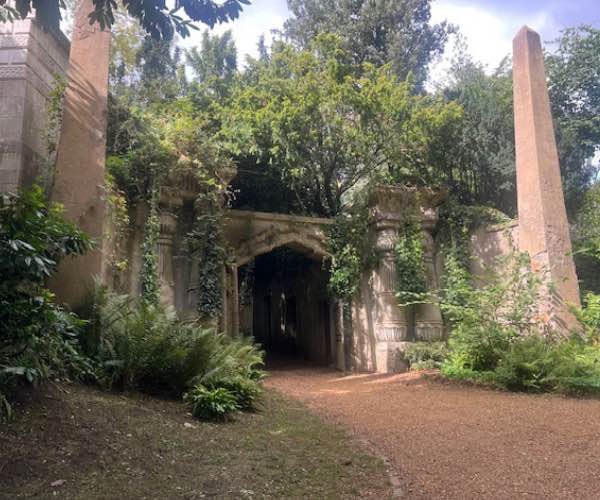
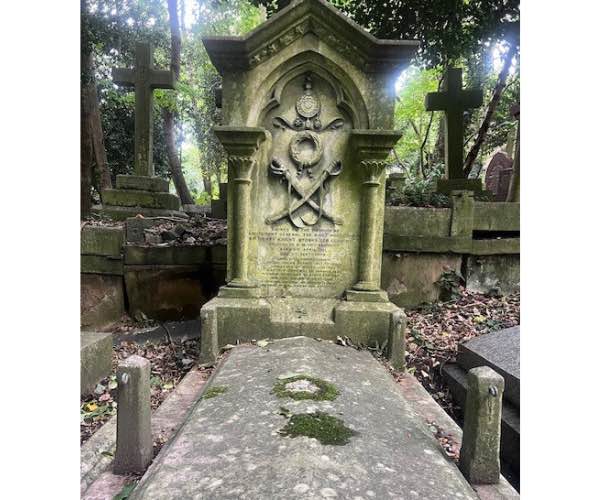
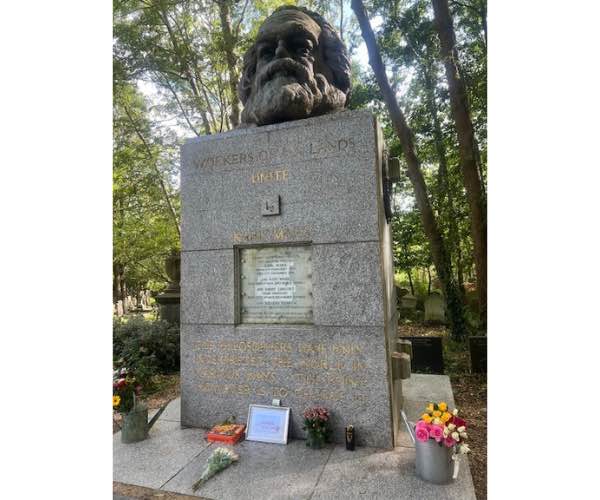
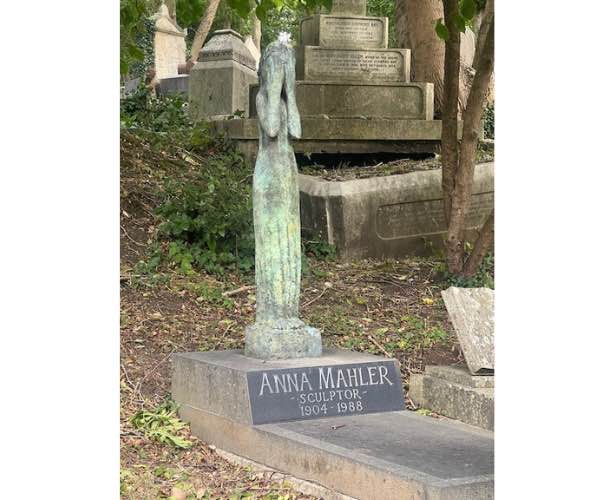
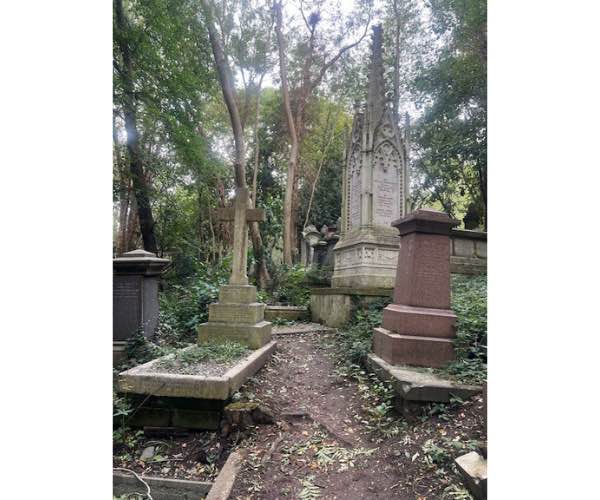
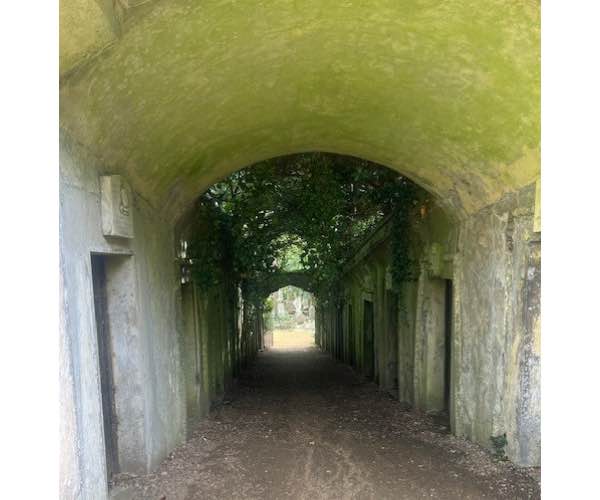
By Paul Topping
In most of the cities I visit, seeking out interesting cemeteries is a must. From Montreal, Edinburgh, Stellenbosch, Kandy, Christchurch to Buenos Aires, to name six out of a hundred or so cemeteries I’ve explored. London’s cemeteries, however, have eluded me, until now. I finally have the opportunity to visit Highgate, which opened in 1839 and is regarded as London’s premier historic and noteworthy cemetery.
A taxi, a train, a bus and a walk, and we arrive. The organisation is impressive. There is a ten-pound cost per person to look around this 37-acre cemetery. They provide a ten-page guide. There are two separate areas and suggested walking routes. Inspiration for the cemetery is said to have come from the Père Lachaise Cemetery in Paris. I published an article on it last year. A charity was created to take over and run this London private cemetery, which had been suffering from neglect, subsidence, overgrown trees and vandalism.
At Highgate, the list of interesting graves is well documented in the leaflet, which gives you a brief on 120 notable graves. The first find is Karl Marx’s original grave, although it is not listed in the guide pack . His grave was later moved to a more prominent site when he became more famous and acceptable. Close by, we find the graves of two boys who drowned, though five others also perished with them; worth a bit of investigation. Douglas Adams, the founder of The Hitchhiker’s Guide to the Galaxy, who died in 2001, has a modest grave. Visitors have left items around it, such as Rubik’s Cubes, pens and other mementoes.
With guide in hand, it’s easy to navigate the two cemetery areas .It’s worth wearing sturdy walking shoes, as some off-track walking is involved. Burials are still taking place, with new plaques appearing. If you have the money, it seems it doesn’t matter who you are, there are no nationality or religious restrictions. This may be worth questioning, further as I’m not familiar with the charity’s decision-making process.
There aren’t many graves of a military nature, but there is a war memorial and several plaques commemorating those killed in the world wars. One grave belongs to a recipient of the Victoria Cross, awarded in 1857.
More walking reveals more interesting people interred. A famous Russian who had been granted asylum in the UK but was murdered in London in 2006 is buried in Highgate. A family of horse slaughterers for Queen Victoria have a tomb. A dog sculpture above a notable grave has been vandalised.
I would estimate that a third of the total graves are subsiding, leaning, engulfed in vegetation including trees or damaged. One area preserved particularly well is the above-ground family vaults: “The Circle of Lebanon”, which runs through two circular buildings, one inside the other, followed by the Egyptian Avenue. Ironically, many of these vaults now have modern combination padlocks.
As we walk about, we spot the occasional fox and a few cats, alive and roaming. Perhaps they’re marking out their own places to be buried.
It’s heartening to see a couple of large school groups touring the cemetery with a guide as part of a history lesson. I feel the excellent ten page document you get on arrival makes a formal paid tour a luxury, unless you’re after an intense four-hour tour.
The charity is clearly balancing revenue and financial gifts with the cost of operations and the preservation of more areas of the cemetery . Good luck to them for taking over the site and transforming a dilapidated cemetery into one of the must-see burial grounds in the world.
As an extra treat we walk back through Waterlow Park started in 1889. Prior five large houses were on the site , one occupied by Nell Gwynn , mistress of Charles the secound . Exit by St Joseph’s Church , and if open it’s worth fifteen minutes of your time. Great copper dome .
What a lovely day out especially with mild Sept weather and no rain .
0 Comments